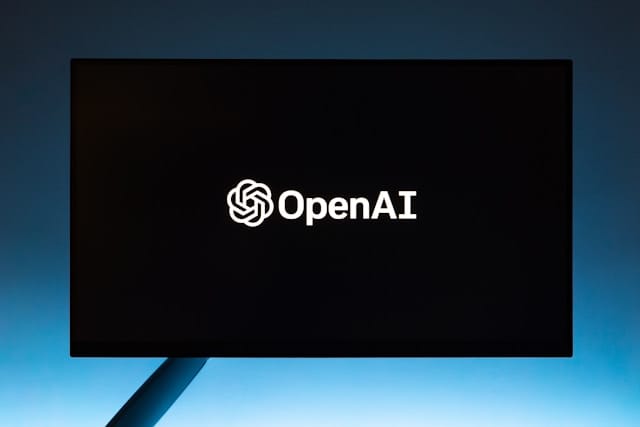Open artificial intelligence (AI) represents a new frontier in accessible technology, making advanced AI resources, tools, and research available to developers, researchers, and organizations worldwide. In recent years, open artificial intelligence has gained traction as a powerful force driving innovation across various fields, including healthcare, education, finance, and more. By encouraging transparency, collaboration, and community-driven development, open artificial intelligence allows diverse stakeholders to harness AI’s potential, enabling rapid advancements in machine learning, natural language processing, and data science.
The concept of open artificial intelligence refers to the movement toward making AI tools, algorithms, and research accessible to the public. Unlike proprietary AI systems that restrict access, open artificial intelligence empowers developers to build and refine AI models collaboratively. This democratized approach to AI has spurred a wave of creativity, allowing developers to create innovative solutions tailored to industry-specific challenges. With open artificial intelligence, startups, academic researchers, and individuals can leverage cutting-edge technology without the high costs traditionally associated with proprietary systems.
This article will explore the key components, benefits, and applications of open artificial intelligence across various sectors, discussing how it is transforming industries and influencing society.
What is Open Artificial Intelligence?
At its core, open artificial intelligence is the concept of making AI technology, data, and models freely accessible to everyone. Open artificial intelligence encompasses a wide range of AI resources, including machine learning algorithms, datasets, pre-trained models, and even entire frameworks. These resources are typically shared on public platforms, allowing developers and organizations to access, modify, and build upon them.
The Essence of Open Artificial Intelligence
Open AI is driven by a commitment to transparency and collaboration. It enables developers to understand how algorithms are built, test new approaches, and share their findings with the broader community. This approach fosters a collaborative environment where developers can work together to improve AI systems. Notably, open artificial intelligence allows smaller organizations, which may lack the resources for proprietary AI solutions, to utilize advanced tools and technologies.
Difference Between Open and Closed AI Systems
Open AI differs significantly from closed AI systems, which are typically owned and controlled by private companies. While closed systems may offer specific advantages, such as security and proprietary technology, they limit access to the AI’s inner workings. In contrast, open artificial intelligence promotes transparency, allowing users to see the algorithm’s code, understand its operations, and modify it as needed.
Key Benefits of Open Artificial Intelligence
Open AI offers numerous advantages that are reshaping how industries approach AI development. Here are some of the primary benefits:
Enhanced Accessibility
One of the most significant benefits of open AI is that it makes AI resources accessible to everyone, regardless of budget or expertise level. Open AI platforms provide free or low-cost access to machine learning frameworks, libraries, and datasets, empowering developers, researchers, and small businesses to leverage AI.
Accelerated Innovation
Open artificial intelligence accelerates innovation by enabling developers to build on existing technology. Instead of starting from scratch, they can leverage pre-existing open-source models and frameworks, leading to faster development cycles. This approach allows for rapid experimentation and iteration, fostering a dynamic environment for innovation.
Collaboration and Knowledge Sharing
The open artificial intelligence community thrives on collaboration. By sharing knowledge, data, and code, developers can collectively tackle challenges, refine algorithms, and develop new solutions. This collaborative environment is especially valuable for addressing complex problems that require diverse perspectives.
Transparency and Trust
Open artificial intelligence promotes transparency, which is essential for building trust in AI systems. Users can examine the underlying code and algorithms, understand how AI decisions are made, and identify potential biases or errors. This transparency is crucial for applications where accountability and ethical considerations are paramount, such as healthcare or criminal justice.
How Open Artificial Intelligence Works
The open artificial intelligence ecosystem includes various tools, platforms, and resources that developers can access to create and improve AI models. Here’s a look at some of the key components that make open artificial intelligence possible:
Open-Source Frameworks
Open-source frameworks, such as TensorFlow, PyTorch, and Scikit-Learn, are at the heart of open artificial intelligence. These frameworks provide a foundation for building machine learning models, offering pre-built algorithms, libraries, and tools that simplify development. Developers can modify these frameworks, adding their own innovations or improving existing models.
Pre-Trained Models and Datasets
Open AI often includes pre-trained models and publicly available datasets. Pre-trained models allow developers to apply complex algorithms without the need for extensive training data. For instance, models for image recognition or natural language processing can be used in various applications, saving developers time and resources.
Community Platforms and Collaborative Tools
Platforms like GitHub and Hugging Face are essential for open artificial intelligence, as they provide a space for developers to share code, discuss challenges, and collaborate on projects. These platforms facilitate version control, issue tracking, and community-driven improvements, making it easier for developers to work together.
Licensing and Governance
To ensure that AI resources remain open and accessible, the open artificial intelligence movement often relies on licensing frameworks, such as the MIT License, Apache License, and GNU General Public License (GPL). These licenses allow developers to use, modify, and distribute code while maintaining certain rights and responsibilities.
Applications of Open Artificial Intelligence in Healthcare
Healthcare is one of the industries benefiting most from open artificial intelligence. By providing open access to tools and datasets, open AI has paved the way for significant advancements in medical research, diagnostics, and patient care.
Disease Prediction and Diagnostics
Open artificial intelligence enables researchers to develop predictive models for disease diagnosis. For example, AI algorithms trained on open medical datasets can identify patterns in medical imaging, helping to detect conditions like cancer or heart disease early. With open-source models, hospitals and clinics can integrate predictive diagnostics into their workflows without the high costs associated with proprietary solutions.
Personalized Treatment and Drug Discovery
Open AI allows researchers to accelerate drug discovery by analyzing large datasets of chemical compounds and patient responses. AI algorithms can predict how different drugs will interact, leading to faster identification of effective treatments. Personalized treatment plans, based on individual patient data, are also possible with open AI, allowing for targeted therapies that improve patient outcomes.
Public Health Surveillance
Open AI has a vital role in public health, particularly in tracking and responding to disease outbreaks. AI algorithms analyze data from multiple sources, such as social media, health reports, and environmental data, to identify potential health risks. This proactive approach enables public health organizations to respond quickly to emerging threats.
Open Artificial Intelligence in Education
Education is another field where open artificial intelligence is making a transformative impact, providing tools for personalized learning, curriculum development, and skills training.
Adaptive Learning Platforms
With open artificial intelligence, educators can create adaptive learning platforms that adjust to students’ individual learning needs. AI-powered platforms analyze student performance in real-time, identifying areas where they struggle and tailoring the curriculum accordingly. Open-source AI models allow schools and universities to develop these platforms without relying on expensive proprietary solutions.
Virtual Tutors and Language Learning
Open artificial intelligence enables the development of virtual tutors, which provide interactive support to students. Language learning apps, for example, use AI to offer pronunciation guidance, vocabulary building, and conversational practice. Open AI models can be customized for different languages and educational levels, making them accessible to learners worldwide.
Educational Resource Creation
Open artificial intelligence facilitates the creation of educational resources, such as interactive textbooks, videos, and assessments. Teachers can use open-source AI tools to develop customized content that aligns with their curriculum. This flexibility allows educators to provide more engaging and effective learning materials.
Ethical and Social Implications of Open Artificial Intelligence
While open artificial intelligence has numerous benefits, it also raises ethical and social concerns that must be addressed. Transparency, accountability, and privacy are essential considerations in the development and application of open AI.
Privacy and Data Security
Open AI often relies on large datasets, which may include sensitive personal information. Ensuring data privacy and security is critical, particularly in fields like healthcare and education. Developers must implement robust security measures and adhere to ethical standards to protect user data.
Bias and Fairness
AI models can inadvertently reinforce biases present in training data. Open artificial intelligence allows for greater transparency, which can help identify and address these biases. However, developers must be vigilant about ensuring fairness in AI applications, especially in sectors like criminal justice or employment, where biased algorithms can have significant consequences.
Accountability in Open AI Applications
Open AI allows for public scrutiny, which is beneficial for accountability. However, open-source projects often lack centralized oversight, making it challenging to establish accountability. The open AI community must adopt governance standards to ensure responsible use and prevent misuse of AI technology.
Future Prospects of Open Artificial Intelligence
The future of open artificial intelligence holds immense promise as it continues to drive innovation across sectors. Here are some emerging trends and developments to watch:
Increased Collaboration in AI Research
As open artificial intelligence gains traction, collaboration between academic institutions, private companies, and governments is expected to increase. This collaborative approach will lead to more robust and diversified AI models, capable of addressing complex global challenges.
Growth of Open AI in Emerging Markets
Open artificial intelligence has the potential to benefit emerging markets by providing affordable and accessible AI tools. Industries in developing countries can leverage open AI to improve healthcare, education, and infrastructure, accelerating progress and closing the technology gap.
Enhanced AI Ethics and Governance
The open AI community is likely to adopt stricter ethical standards and governance frameworks as technology advances. Establishing guidelines for responsible AI development will ensure that open artificial intelligence benefits society while minimizing potential risks.
Conclusion
Open artificial intelligence is revolutionizing industries by making cutting-edge technology accessible, transparent, and collaborative. Its impact spans healthcare, education, public policy, and beyond, empowering developers to create solutions tailored to diverse challenges. As open artificial intelligence continues to evolve, its potential to drive innovation, increase accessibility, and promote ethical standards will be essential for a future where AI benefits all of society. By embracing the collaborative spirit of open AI, we can unlock new opportunities and create a more equitable and technologically advanced world.






